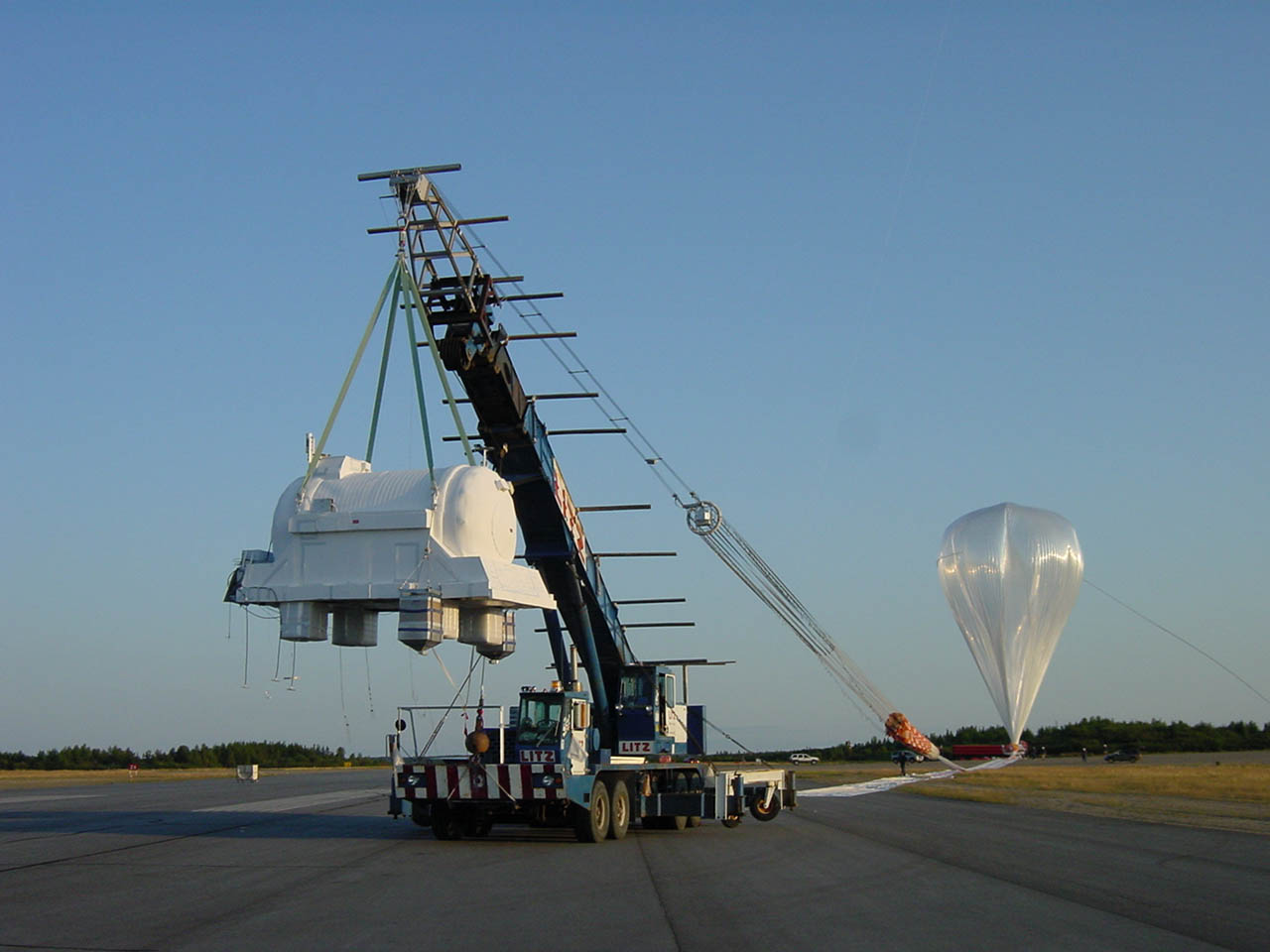BESS experiment
The BESS-Polar experiment is being prepared for long-duration balloon flight at polar latitudes as the next generation of the highly successful BESS (Balloon-borne Experiment with a Superconducting Spectrometer) program. One unique feature the instrument is the “thin” superconducting magnetic-rigidity spectrometer. A uniform magnetic field is produced by a very thin solenoidal superconducting coil, through which cosmic-ray particles can pass with a very low probability of interacting. The BESS experiment aims at making extremely sensitive measurements of low-energy antiprotons to search for indications of novel primary origin and to study cosmic-ray propagation and the effects of solar modulation. Another fundamental objective is to carry out a sensitive search for heavier cosmic-ray antinuclei as a probe of baryon asymmetry/symmetry in the Universe.

Fig.1. BESS superconducting solenoid.
Balloon flights of the BESS instrument have been carried out in northern Canada nearly every summer since 1993. In eight high-latitude flights, more than two thousand low-energy cosmic-ray antiprotons (0.2 ~ 4.2 GeV) have been definitely identified by charge, mass, and charge-sign measurements, and their energy spectra have been precisely measured for the first time. These measurements have clearly shown that the low-energy antiprotons are primarily secondary products of the interactions of primary cosmic-ray nuclei with the interstellar gas. The measurements from 1995 and 1997, however, indicated antiproton fluxes slightly in excess of theoretical calculations, especially in the very-low-energy region below 0.5 GeV. This may suggest a contribution to the low-energy antiproton flux from exotic primary sources such as evaporation of primordial black holes or annihilation of neutralino dark-matter. The BESS-Polar program is very important to extend the precise BESS measurements of antiproton spectra to lower energies with high statistics in order to search for possible novel primary sources.

Fig.2. Balloon and BESS-polar detector.
Not a single antihelium nucleus has been found by BESS even though 7 million helium nuclei have been detected during 7 flights from 1993 through 2000. This fact provides the most direct evidence that our Galaxy and those nearby are made solely of matter, not antimatter. However, although some theories have been proposed to explain the apparent asymmetry of matter and antimatter in the Universe, the fundamental question remains why nature appears not to have produced a simple balance of matter and antimatter. If antihelium were to be detected, it would provide evidence that antimatter galaxies exist. Current BESS measurements have resulted in a model dependent upper limit to the ratio of antihelium to helium of 6.8 x 10-7 at a 95% confidence level. However, it is important to extend the BESS search for antimatter with even higher statistics to understand how far from our Galaxy the observed absence of cosmological antimatter extends.
The experiment is being carried out with an international collaboration formed by KEK, The University of Tokyo, Kobe University, ISAS/JAXA, NASA/GSFC and University of Maryland.



